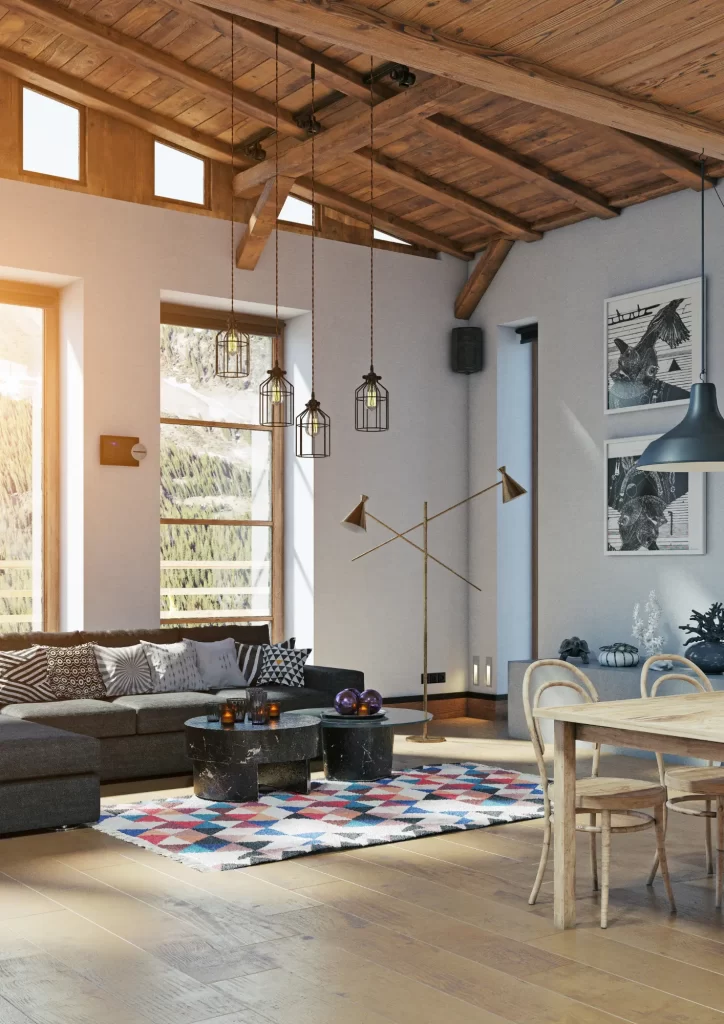Gothic Victorian Architecture refers to a style of architecture that emerged during the Victorian era, which spanned from 1837 to 1901. It is characterized by its ornate, highly decorative features that were inspired by the Gothic architecture of medieval Europe. Gothic Victorian house buildings often feature pointed arches, steeply pitched roofs, intricate carvings, and stained glass windows. The style was popularized by architects like Augustus Pugin and George Gilbert Scott and was used extensively in the construction of churches, civic buildings, and homes during the Victorian era.
Historical Context and Architectural Influences
The rise of Gothic Victorian Architecture occurred during the Victorian era, which spanned from 1837 to 1901. This period was marked by a growing interest in romanticism, which drew inspiration from medieval Europe and its Gothic architecture. The Industrial Revolution also played a significant role in shaping the architecture of the time, as new technologies and materials allowed for greater construction possibilities.
Architects like Augustus Pugin and George Gilbert Scott were instrumental in popularizing the Gothic Revival movement, which sought to revive the architectural style of medieval Europe. They were inspired by the cathedrals and castles of the Middle Ages and sought to recreate their grandeur and sense of mystery in their buildings.
Other architectural influences on Gothic Victorian House Architecture included the Arts and Crafts Movement, which emphasized traditional craftsmanship and natural materials, and the influence of the British Empire, which brought new styles and materials from around the world.
Overall, Gothic Victorian House Architecture was a reflection of the Victorian era’s fascination with the past, combined with the new technologies and materials of the time.
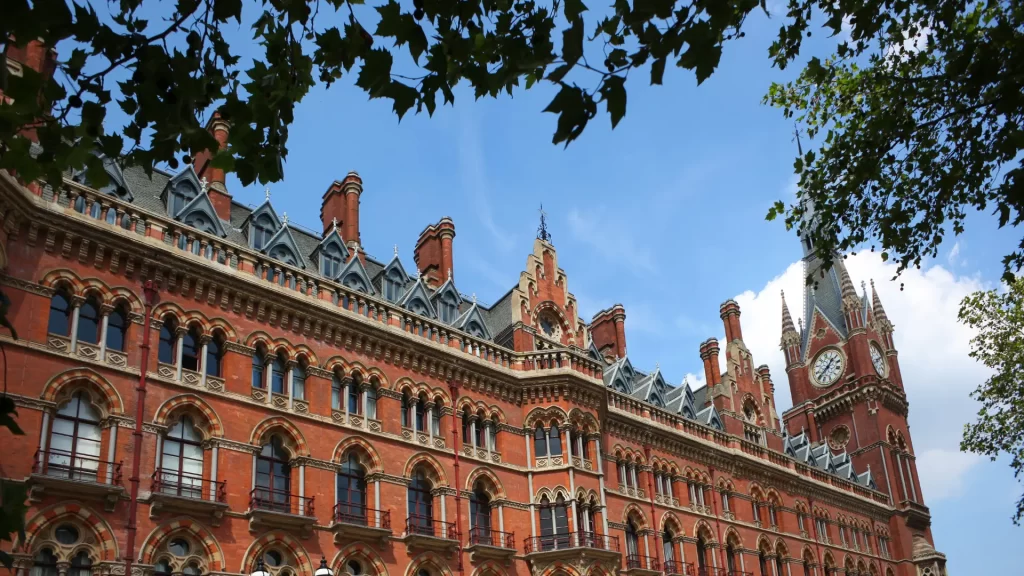
Notable Gothic Victorian Buildings
There are many notable Gothic Victorian buildings around the world, here are a few examples:
- The Houses of Parliament in London, UK – This iconic building was designed by Charles Barry and Augustus Pugin and completed in 1870. It features Gothic Revival architecture with its pointed arches, intricate stonework, and decorative spires.
- St. Pancras Station in London, UK – This railway station was designed by William Barlow and completed in 1868. It features a grand arched entrance and a clock tower with intricate stonework and Gothic Revival detailing.
- The Royal Exhibition Building in Melbourne, Australia – This building was completed in 1880 and was designed by Joseph Reed in a Gothic Revival style. It features a large dome, intricate stonework, and ornate detailing.
- The Cathedral of St. John the Divine in New York City, USA – This cathedral was designed in the Gothic Revival style and features pointed arches, stained glass windows, and intricate stonework. Construction began in 1892, but the building remains incomplete.
- The Palace of Westminster in Bangkok, Thailand – This building was completed in 1925 and was inspired by the Gothic Revival architecture of the Houses of Parliament in London. It features a grand facade with pointed arches and decorative spires.
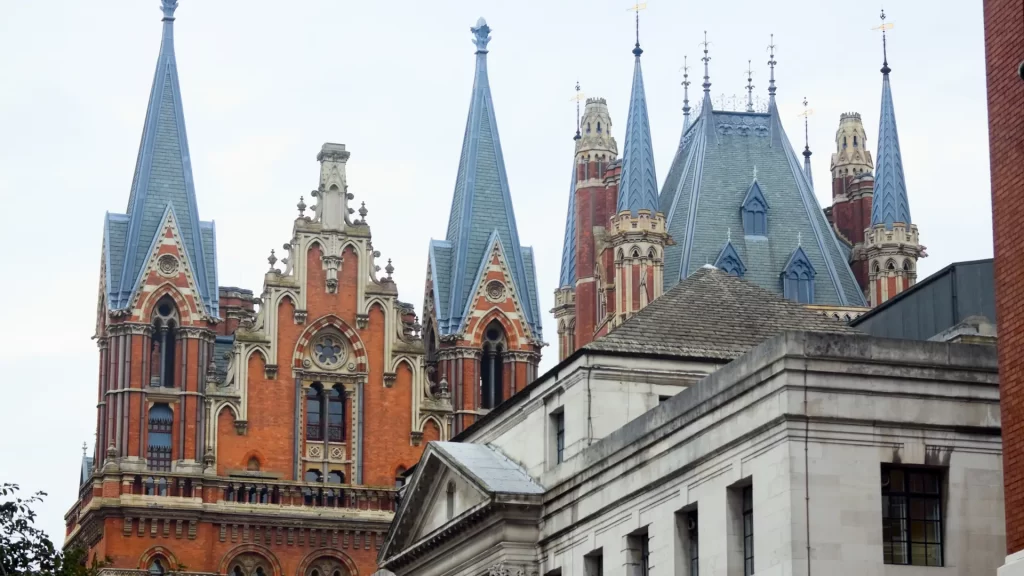
Factors that Contributed to the Decline in Popularity of the Style
Several factors contributed to the decline in popularity of Gothic Victorian Architecture, including:
- Changing tastes and styles: As the Victorian era progressed, new styles and tastes emerged, including the Arts and Crafts movement and Art Nouveau, which emphasized simplicity and a departure from ornate styles.
- Economic factors: The cost of constructing and maintaining Gothic Victorian House buildings was high, and the economic downturn of the late 19th century made it more difficult to finance large building projects.
- Practicality: Gothic Victorian Architecture was often criticized for being impractical and difficult to maintain, with its ornate stonework and intricate details requiring frequent upkeep.
- Technological advancements: Advances in technology and materials meant that architects had more options for construction and design, and new materials like steel and concrete were more cost-effective and versatile than traditional materials.
Overall, changing tastes, economic factors, practicality, and technological advancements all contributed to the decline in popularity of Gothic Victorian Architecture.
Buildings that Marked the End of the Era
There were several buildings that marked the end of the era of Gothic Victorian Architecture, including:
- The Rand Club in Johannesburg, South Africa – This building was completed in 1904 and features Gothic Revival architecture with intricate stonework and decorative detailing. It was one of the last major Gothic Revival buildings constructed in South Africa.
- Manchester Town Hall in Manchester, UK – This building was completed in 1877 and features Gothic Revival architecture with a grand clock tower and intricate stonework. It is considered one of the last great Gothic Revival buildings in the UK.
- The Catedral Metropolitana in Buenos Aires, Argentina – This cathedral was completed in 1902 and features Gothic Revival architecture with pointed arches, stained glass windows, and ornate stonework. It was one of the last Gothic Revival buildings constructed in Argentina.
Overall, these buildings marked the end of an era of Gothic Victorian House Architecture, as new styles and tastes emerged and traditional materials and techniques became less practical and more costly.

Gothic Revival Movement
The Gothic Revival movement was a 19th-century architectural movement that sought to revive and reinterpret the architectural style of medieval Europe. It emerged in the early 19th century as a response to the perceived coldness and lack of ornamentation of neoclassical architecture, which dominated the previous era.
The movement was largely led by two architects, Augustus Pugin and John Ruskin, who were deeply inspired by the cathedrals and castles of the Middle Ages. They believed that Gothic architecture represented a purity of form and a sense of mystery that was lacking in neoclassical buildings.
Gothic Revival architecture is characterized by its pointed arches, ribbed vaults, and ornate tracery. It also features a strong emphasis on craftsmanship and attention to detail, with intricate stonework and decorative elements.
The movement was popularized in the UK by the Houses of Parliament, which were designed by Charles Barry and Augustus Pugin and completed in 1870. The Gothic Revival style quickly spread throughout Europe and North America, with many architects adapting the style to suit their own cultural and geographical contexts.
Overall, the Gothic Revival movement was a reaction to the perceived sterility of neoclassical architecture and a celebration of the craftsmanship and mystery of medieval Gothic architecture. It remains a popular architectural style to this day, with many Gothic Revival buildings still standing around the world.
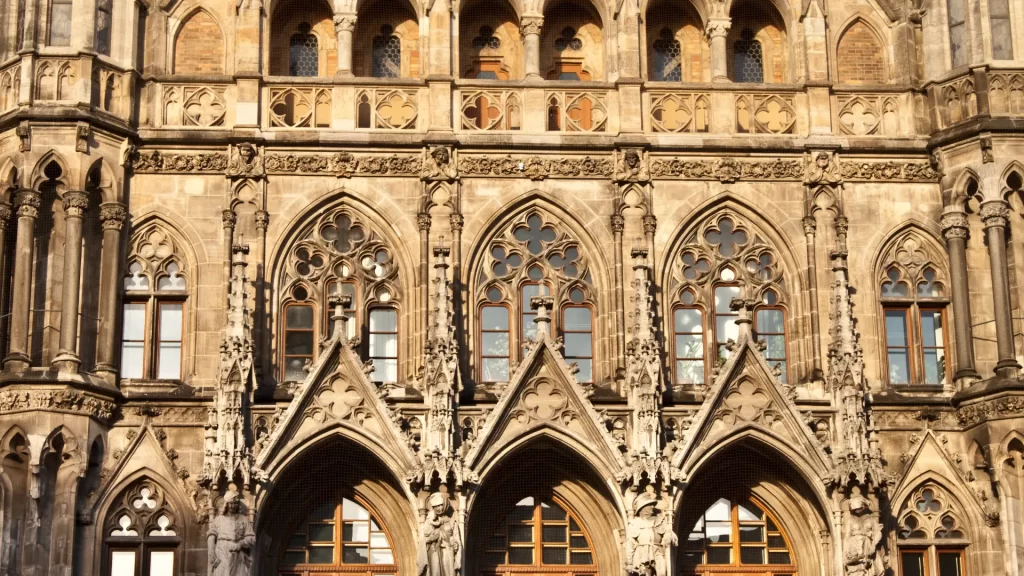
Buildings and Architects that Embraced the Revival
There are many examples of buildings and architects that embraced the Gothic Revival movement, including:
- Augustus Pugin – Pugin was a British architect who was one of the leading proponents of the Gothic Revival movement. He designed many notable buildings, including the Palace of Westminster in London, which features Gothic Revival architecture with intricate stonework and decorative detailing.
- John Ruskin – Ruskin was a British art critic and writer who was a leading advocate for the Gothic Revival movement. His writings on architecture and art were highly influential in promoting the movement.
- St. Patrick’s Cathedral in New York City – This cathedral was designed by James Renwick Jr. in a Gothic Revival style and features pointed arches, ornate stonework, and stained glass windows.
- The Victoria Tower in Stockholm, Sweden – This tower was designed by Helgo Zettervall and completed in 1905. It features Gothic Revival architecture with a pointed spire and intricate stonework.
- The Parliament Buildings in Ottawa, Canada – These buildings were designed by Thomas Fuller and completed in 1927. They feature Gothic Revival architecture with pointed arches, ornate stonework, and a grand clock tower.
These buildings and architects are just a few examples of the many designers and structures that embraced the Gothic Revival movement and helped to shape its influence on architecture around the world.
Lasting Impact of the Style
The Gothic Victorian House style had a significant impact on architecture and design, and its influence can still be seen today in a variety of ways. Here are a few examples:
- Revivalist Movements: The Gothic Revival movement inspired other revivalist movements, such as the Arts and Crafts movement, which was popular in the late 19th and early 20th centuries. These movements embraced traditional craftsmanship and the use of natural materials, which were hallmarks of the Gothic Revival style.
- Public Buildings: Many public buildings, such as churches, government buildings, and educational institutions, were constructed in the Gothic Revival style. These buildings often featured intricate stonework, pointed arches, and ornate detailing. Some of these buildings still stand today and are considered architectural treasures.
- Residential Architecture: The Gothic Revival style also had an impact on residential architecture, with many Victorian homes featuring Gothic elements such as steeply pitched roofs, ornate trim, and pointed arches.
- Popular Culture: The Gothic Revival style has had a lasting impact on popular culture, inspiring countless novels, films, and television shows that feature Gothic elements. The style’s association with mystery and romance has made it a popular choice for horror and fantasy genres.
Overall, the Gothic Victorian style has had a lasting impact on architecture, design, and culture. Its influence can still be seen today in a variety of ways, making it one of the most enduring architectural styles in history.
Gothic Victorian Architecture is still Relevant Today
Gothic Victorian House architecture remains relevant today, and its influence can be seen in many modern buildings and design styles. Here are a few examples:
- Neo-Gothic Architecture: Neo-Gothic architecture is a revival of the Gothic Revival style that emerged in the late 19th century. It is characterized by pointed arches, ribbed vaults, and ornate tracery, and it can be seen in many modern buildings, such as the Cathedral of Christ the Light in Oakland, California.
- Gothic Elements in Contemporary Design: Many contemporary designers incorporate Gothic elements into their work, such as Gothic-inspired furniture and lighting. This blending of the old and the new creates a unique and timeless aesthetic that continues to be popular today.
- Gothic Fashion: Gothic fashion is a subculture that draws inspiration from the Gothic Revival movement, featuring black clothing, ornate accessories, and intricate detailing. It has remained popular for decades and continues to influence fashion today.
- Gothic Literature and Media: Gothic literature and media, such as novels, films, and television shows, continue to be popular today and often feature Gothic architecture and design elements. This association with mystery and romance has helped to keep the Gothic Victorian style relevant in popular culture.
Overall, the Gothic Victorian style remains relevant today, and its influence can be seen in many aspects of contemporary design and culture. Its enduring appeal speaks to the timeless quality of its aesthetic and the deep cultural significance it holds.
Summary of Key Points
- Gothic Victorian architecture emerged in the mid-19th century as a response to industrialization and a desire to reconnect with the past.
- Gothic Victorian architecture was influenced by medieval architecture and featured pointed arches, ornate stonework, and other intricate details.
- Many notable buildings were constructed in the Gothic Victorian style, including the Palace of Westminster in London, the Cathedral of St. John the Divine in New York City, and the Victoria Tower in Stockholm, Sweden.
- The Gothic Revival movement, which embraced the Gothic Victorian style, was characterized by a desire to embrace traditional craftsmanship and natural materials.
- The decline of the Gothic Victorian style was due to changing tastes and the emergence of other architectural styles.
- The Gothic Victorian style’s lasting impact can be seen in the revivalist movements it inspired, the public buildings and residential architecture it influenced, and its continued influence on popular culture, such as Gothic fashion and literature.
- The Gothic Victorian style remains relevant today and can be seen in modern architecture and design, such as neo-Gothic architecture, Gothic-inspired furniture and lighting, and Gothic literature and media.
Final Thoughts on the Importance of Gothic Victorian Architecture
In conclusion, Gothic Victorian House architecture was an important movement that emerged in response to the rapid industrialization of the 19th century. It drew inspiration from medieval architecture and was characterized by its intricate stonework, pointed arches, and ornate detailing. This style had a significant impact on public buildings, residential architecture, and popular culture.
While the Gothic Victorian style eventually declined in popularity, its influence can still be seen today in many aspects of contemporary design and culture. From neo-Gothic architecture to Gothic-inspired fashion and literature, the Gothic Victorian style remains relevant and continues to inspire designers and creators around the world.
Overall, the Gothic Victorian style is an important part of architectural history and represents a cultural response to the changing world of the 19th century. Its enduring appeal speaks to the power of design and architecture to evoke emotions, tell stories, and inspire future generations.
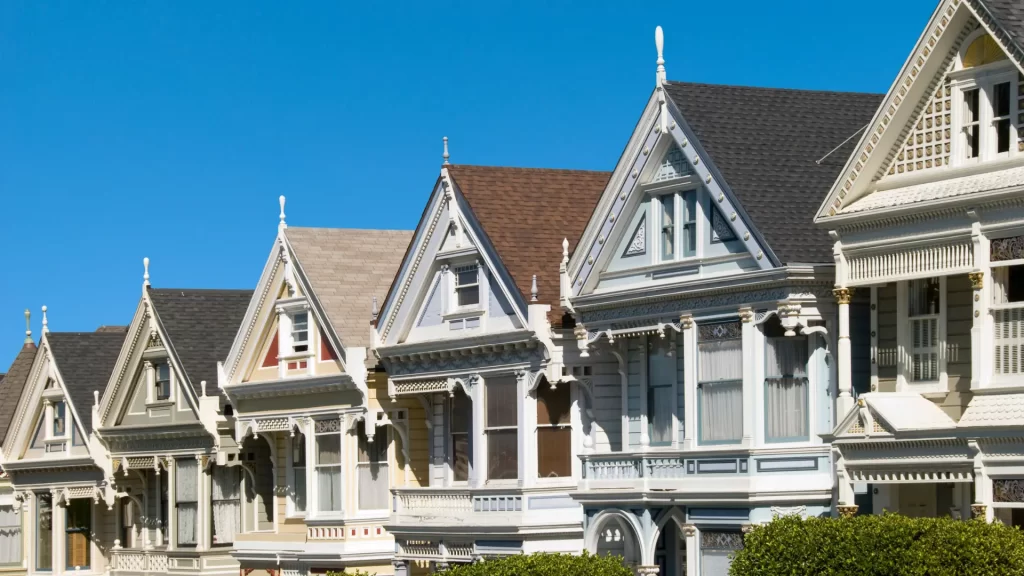
Come explore the elegance and beauty of Georgian housing around the world! In this blog post, we’ll take a closer look at the distinct features and design elements of this iconic architectural style, from the elegant townhouses of London to the grand mansions of America’s East Coast. Join us on this journey through time and space to discover the enduring appeal of Georgian housing and its influence on contemporary design. Read now Georgian Housing Around the World!





